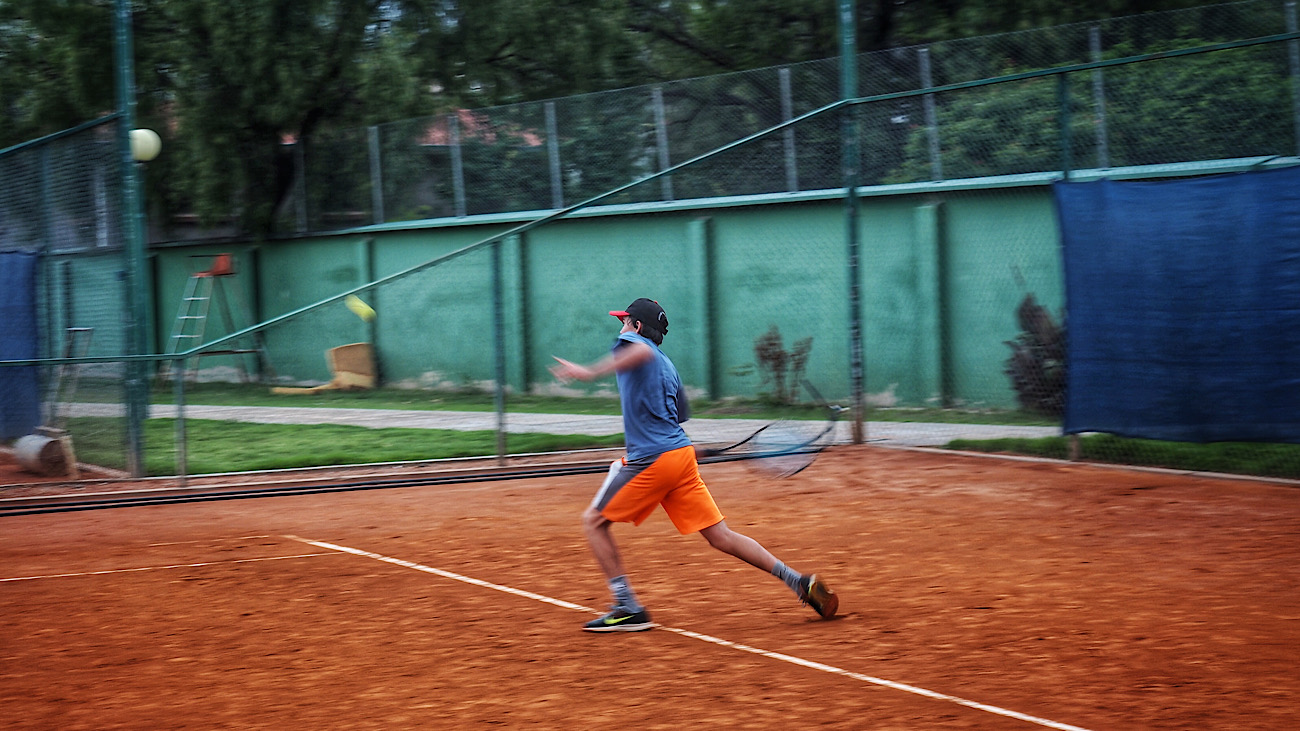For most, practice consists of repeating what they already know how to do.
I know it sounds weird when I put it that way. But if you take a good look around, you will everywhere see tennis players and golfers and baseball players and footbalistas and actors and public speakers repeatedly drilling the fundamentals of their craft. (Things they already know how to do.)
When we accomplished performer, we focus on the visible… their forms…. technical systems. They are far more refined than ours.
We too could soar with the gods… if only we had such form.
What separates us from that form? Tons of practice, everyone says. Probably talent too. (I’ll get to talent later.)
In 2010 Dan McLaughlin quit his job to make time for his new gig… professional golf. (The most interesting part of this story: Dan had never played a complete round of golf in his life.)
What made a guy who had never played a complete round of golf think he had chance to play professionally? A book. Malcolm Gladwell’s “Outliers”, to be specific. Here Dan learned that the only thing standing between him and his first golf payday was 10,000 hours of deliberate practice.
Dan wasn’t yet 30. He still had 10,000 hours in him. So he scheduled 40 deliberate hours of golf weekly, and calculated a five-ish year incubation.
Long story short… Dan got pretty good. But he didn’t arrive at his destination.
It takes more than hours. Even deliberate ones.
Is it true that better technique leads to better performance? (Also… don’t you find it interesting that you’ve never considered the question?)
For two years I conducted a thoroughly unscientific study. I’d watch similarly rated, club level tennis players play against each other. Before each match I’d pick the player who had the better techniques.
Technique was no better a predictor of the outcome than a coin toss.
Yes, you have to know how to drive to pilot a race car. But getting around the circuit faster than anyone else is the razors edge of the art? You navigate that solo.
Excellence requires more than hours. More than form too.
A golfer suddenly loses their swing. A tennis players backhand short circuits. A basketball player goes cold. A pitcher can’t find the strike zone. An actor loses their character.
It happens all the time.
What is going on? These people have practiced for thousands of hours. Their form is flawless… but somehow, they suddenly can’t access it.
We’re not robots, the ‘experts’ say. Human performance is variable. We’re all imperfect actors in an imperfect world.
But this is absolutely not true. The heavens operate like Swiss clockwork. As does our world. And so do we. Our eyes and ears and circulatory and immune systems repeat their functions flawlessly every second of every minute of every hour of every day. Unless something is wrong.
Human performance does not vary… unless something is wrong.
So… what’s wrong?
It’s nerves… right? Stage fright. Performance anxiety. Choking. We’ve all experienced it.
Happily enough, there’s a practice technique for that. You bring stress into your practice. Because repeatedly doing the things you know how to do under stress builds stress immunity. Supposedly.
Isn’t it odd that instead of trying to bring the fun of practice to performance… we instead choose to bring the stress of performance to practice?
You may be unhappy to discover that it is common for junior athletes in certain countries to be strictly punished after bad practices. I’d say that is about as stressful as a practice can get. Yet, players from those federations don’t seem to handle their performance stress any better than players from more gentle programs. In fact, it seems that burnout is the only reliable outcome of a stressful practice regimen.
So there’s that.
I won’t waste your time with the “school of happy thoughts”.
Somewhere along the line the hard work story will also come into play. We’ve all heard about the top performers who worked themselves to the bone. But have you heard the story about the guy who decided to walk to the horizon? For three solid days he walked. And when the dawn of the fourth day revealed that he’d gotten no closer to his objective… he started to run.
Hard work is too often a ghost dance. A prayer for divine intervention that’s issued when you’ve run out of earthly ideas.
Mastery requires more than hours and form and nerves of steel and hard work. If you really think about it… (and by really I mean no thought gets a free pass), you will see that the answer is so obvious, you’ll wonder how you missed it all this time:
The way we practice doesn’t work.
I think we can agree that whatever a ‘method’ consistently delivers is what that ‘method’ is good for?
For example, you turn your computer on by pushing the power button. And if it didn’t come on every time you pushed the button… you wouldn’t think of that as the way to turn the machine on. Right?
What is the most common result of the most common practice methods? Failure.
It’s true!
The only reason we believe that only 1% ‘make it’, is because 99% don’t.
Please pause and think about that for a second.
So many.
Trying so hard.
Going nowhere.
And still… we won’t change.
Ok… that’s not entirely true. We’ll change teachers… and methods… and 10 step plans, but not our belief in them.
Returning to talent, as promised. The reason 99% fail, is because they aren’t talented enough. Right?
Something innate like “talent” explains things between levels… like why Suzie is an entrepreneur and Joey isn’t, or why Jim is a pro and Bill isn’t, but talent explains nothing among all those at the same level.
In other words, instead of forcing systems and methods to earn their keep, we’ve invented mystical properties like talent and deliberateness to explain their failure. (Which, happily enough for the coaching crew, keeps the 99% paying for their services.)
The rarest thing in anyone is an act of of their own. I think Emerson said that. And if you take a good look around… he was right. Most people are trying to be other people. Their style, copied. Their ambitions, implanted. Their beliefs, absorbed.
For over eighty years everyone in the running world knew that it wasn’t humanly possible to run a mile in under four minutes.
That changed in 1954, when Roger Bannister did the impossible.
Incredibly, John Landy ran a faster mile only 46 days after Bannister broke the barrier. And three milers broke the four minute mark… in the same race, barely a year after Bannister broke the record.
What changed? How did the undoable become so doable?
A few years ago some researchers set off in search for some hard data that would explain that sudden glut of sub-four minute miles. Changes in equipment or training methods or nutrition.
They didn’t find any.
Their final conclusion: the explanation for the racers sudden ability to break the barrier was that the perception of the possible had changed.
No, I’m not making a case for “sports psychology”? Sports psych is just another minefield of temporary hacks and assorted half solutions that also have a 99% fail rate.
Human beings do not observe reality. We create it with our perceptions. And those perceptions are created by the environment that we live in. We are all the average of the beliefs we spend the most time with.
Ask why batting averages and shooting averages and tournament golf scores are all so similar… you’ll be told that these numbers represent the limits of what a human can do. (Proven by data that goes back to the beginning of the sport.)
Sound familiar?
The master player separates themselves from the prevailing perception of possibility.
This isn’t some new age hippy dippy baloney. When top performers are debriefed they consistently describe having different perceptions than their lower performing colleagues. The target was bigger. The situation, non-threatening. The mission, possible.
Perception is the invisible side of performance. The proverbial hidden mass of the iceberg. So many dedicate the majority of their efforts to the minority of their craft.
Most likely, I have stepped on at least one of your toes here. I have doubted a universally accepted practice. Challenged the status quo. Questioned a sacred belief.
If so, your first instinct is probably to dismiss me.
But before you do that… please ask yourself why. Is it because I’m wrong? Or is it because it would be inconvenient if I was right?
Those devoted to excellence have no sacred cows.
When an astronaut is exposed to the weightlessness of zero gravity the needs of his body change. The demands on his bones are decreased. The demands on balance increased. He unconsciously diverts resources from his bones to his central nervous system.
The mind of a Truthstronaut pulls a similar trick. It sifts beliefs for irreducible truths… stops supporting what doesn’t survive the scrutiny, and frees itself to pursue the “impossible”.
P.s. If you liked this… you’ll love my book, “The Art of Holding Serve”. Some famous coaches said it was the one of the most interesting tennis books they’ve read. A bunch of other non-famous people said the same thing. No ones said it sucked… yet. (Not to my face anyway)

